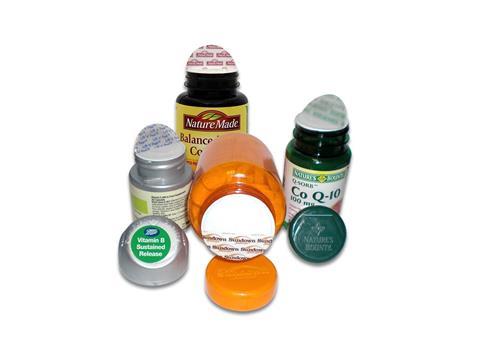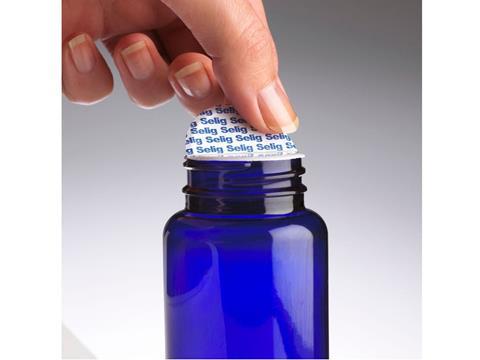
Geoffrey Lu, EVP and GM at Selig, discusses the challenge of creating packaging that is secure and tamper-proof, while remaining easy to open for elderly consumers, those who lack strength or suffer from dexterity or mobility impairments.
A United Nations report published back in 2002 remarked that global population ageing is “unprecedented and without parallel in human history”. Europe, for example, is home to a growing proportion of people who are living considerably longer than ever before, and the European Commission has admitted this demographic transition is likely to be one of the biggest challenges that the continent of Europe will face in the coming years. The impact on industry will be wide ranging and profound, and the packaging sector is no exception.
Product type, properties and characteristics often determine the nature of packaging, and where container closures are concerned, this may involve the use of certain features that will prevent even a determined child from opening the package. Such features can cause problems and frustration for older users. Achieving user-friendly packaging also goes beyond the methods used to open and close it; ergonomic styling for easy handling plays a role too, and clearly labelled instructions for opening in as large a font as possible are vital.

In a survey of 2,000 consumers, market research specialist Which? found that two thirds of people get frustrated, or suffer ‘wrap rage’, when trying to get into everyday packaging. Whilst a staggering four in ten people said they have hurt themselves while trying to open something, a quarter of people also mentioned they regularly need help to open packaging, which is perhaps especially worrying as a substantial number of older people live alone with little help immediately available to them.
The challenge facing the packaging industry is to create packaging that is secure and hermetically sealed to safeguard the integrity of its contents, which poses no accessibility problems for elderly consumers who may lack strength or suffer from dexterity or mobility impairments. While tamper evidence seeks to make packaging difficult to breach, it raises a number of issues for the elderly who may risk harming themselves if they need to resort to kitchen utensils in order to open a tamper evident package.
Manufacturers have the choice of several different strategies to include tamper-evident features on primary and secondary packaging, shrink wrap films, bands or wrappers, boxes with tamper-evident security seals and breakable caps being among them. Again, these may require a degree of strength and dexterity to break them open. One of the most commonly used is the tamper-proof peelable seal, yet even these have issues for the elderly, particularly seals that are tough to peel off or that fail clearly to mark the point from where the seal should be lifted.
One tamper-evident, peelable seal technology that overcomes these limitations is induction cap sealing, an approach that uses a multi-layer laminated liner with an aluminium foil that is bonded to the container rim by means of electromagnetic induction heating. Induction liners are highly engineered laminated structures comprising a heat seal layer, chosen to match the material of the underlying container, and a layer of aluminium foil that is heated by electromagnetic induction prior to bonding.

Optimum results for these seals, combining security with easy-to-peel features, are achieved by making an appropriate choice of lining material and using the correct measure of pressure, heat and time during the induction sealing process. Pressure is needed for the liner to have an even seal to the container rim and this is achieved by the torque heads of the capper when placing the closure onto the filled container.
Heat is applied via a magnetic induction process. This raises the temperature of the seal’s metallic foil element to initiate adhesion of the seal liner with the container rim. Timing is crucial for a successful seal. Timing intervals include the period the closure passes beneath the induction coil and the following cooling period, during which the container must not be subject to any rough handling as it is moved by the conveyor.
Too much pressure (cap-on torque) between the liner and container rim, excessive heat to activate the liner seal surface, or extended dwell time under the induction coil will leave users with a seal that cannot be removed with ease. While too low a level of heat, pressure or time will result in leaks or the ingress of contaminants. Optimal operating window settings for these parameters are normally determined by running trials on the production line under typical conditions.
The choice of liner is also critical to ensuring easy-open packaging and reputable liner manufacturers are constantly developing products to match consumer needs. While there are literally hundreds of different specialist liners available to meet all manner of applications, those liners with an easy-to-grip tab, such as Selig's Lift 'n' Peel™ induction seals, have considerable consumer appeal.
This type of easy-open polyester tab is designed to be ergonomic, flexible and extremely strong, and is engineered specifically to maintain product quality whilst being easy for the consumer to remove. In addition, they can be printed with a customer specific design or branding logo, as well as clear opening instructions in a large font, indicating the position of lift and direction of pull.
An ageing global population is here to stay and the packaging sector must ensure its products constantly evolve to accommodate the needs of the elderly and remain relevant by removing restrictive design. Easily removable seals, such as the Lift ‘n’ Peel™, are very much a part of this process. By selecting the most appropriate lining material and optimising the induction heat sealing process, it is possible to remove the barriers that sub-par packaging can create to ensure it is easy to open while also being totally secure for a positive user experience.











